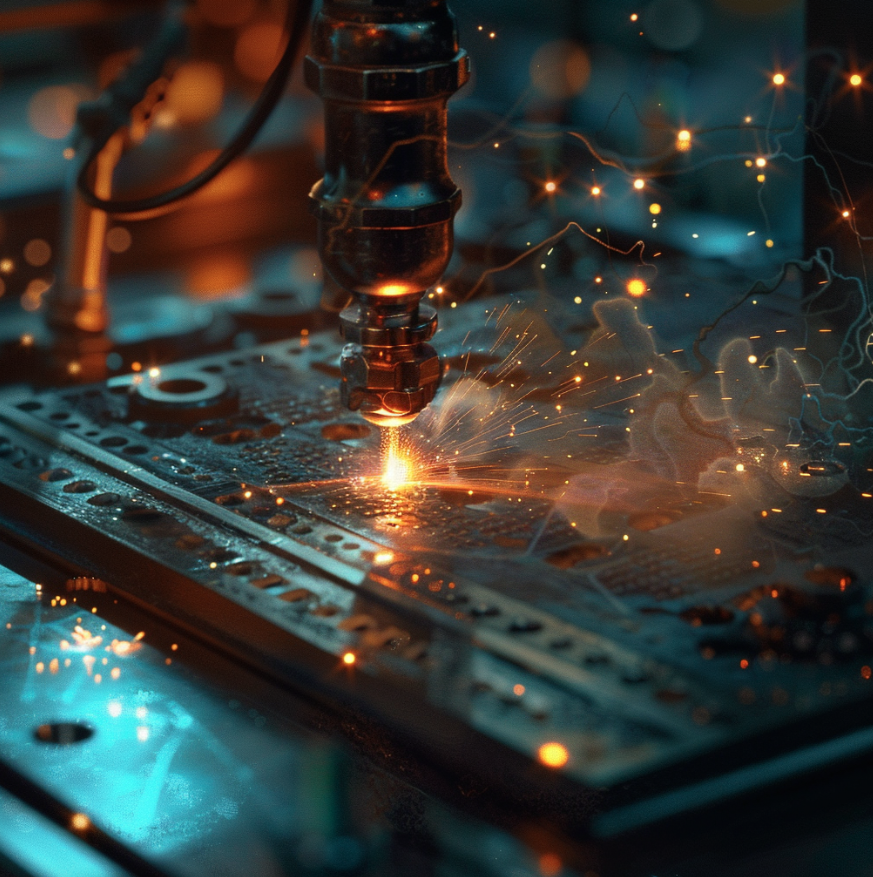Real-world applications of the resistance welding process
Resistance welding is a common process used in many industries and for countless products we use daily.
Here are some real-world examples of resistance welding in action:
- The auto industry relies heavily on resistance welding for assembling vehicle bodies and parts. Spot welding, in particular, is used to join sheet metal panels together for car doors, hoods, trunk lids, and panels. Seam welding is also used on longer joints. These techniques are fast, efficient, and create strong bonds between panels.
- Makers of appliances like refrigerators, washers, dryers, and ovens also leverage resistance welding in their assembly lines. The process is ideal for joining sheet metal and creating air-tight seals — both important for appliances. Spot welding and seam welding are commonly used.
- Resistance welding, especially spot welding, is a standard in aircraft manufacturing. It is used to assemble the aluminum alloy sheet metal that makes up aircraft fuselages, wings, and other components. The high-strength welds it produces are essential for aircraft safety and durability.
- Microspot welding joins very small electronic components, like wires, contacts, and microchips. The miniaturized process allows precise welds to be made without damaging heat-sensitive electronics. Resistance welding is also used for soldering some components onto printed circuit boards.
- For large infrastructure projects like bridges, skyscrapers, and pipelines, resistance welding offers speed, strength, and efficiency. The process is suitable for welding thick steel plates and beams, as well as joining pipes for transporting liquids and gasses.
Frequently asked questions
Is resistance welding the same as induction welding?
No. Resistance welding uses direct electrical current and pressure to join metals. Induction welding uses electromagnetic fields to heat metals before they're joined.
What is the difference between resistance welding and arc welding?
Resistance welding uses pressure and electrical current to join metals without filler material. Arc welding uses an electric arc to create intense heat, melting metals and often using filler material for a stronger join.
What are the problems with resistance welding?
- May not be suitable for all metals or thicknesses.
- Requires clean, oxide-free surfaces for optimal results.
- Can produce surface marks or indentations.
- Setup and maintenance of specialized equipment can be a factor.
Summing up
Resistance welding is a super common manufacturing process that you've definitely encountered, even if you didn't realize it at the time.
But now is the time to ask yourself: Is resistance welding the right process for your fab shop?
To find out, you’ll have to assess your current industry, niche, application — and budget!
Next steps
RO1 by Standard Bots revolutionizes resistance welding with automation, making it accessible to fab shops of every size.
- Budget-friendly innovation: RO1 offers unmatched value, with features comparable to premium robots at a significantly lower price.
- Revamp your workflow: Experience precision and speed like never before with RO1's 6-axis arm and robust payload capacity.
- Prioritizing safety: RO1 fosters a collaborative, human-centric workspace with its intuitive safety features.
- Smarter over time: Harnessing AI similar to GPT-4, RO1 continually learns and optimizes, ensuring continued efficiency gains.
Our team partners with you for a smooth transition and helps you maximize the potential of your RO1 automation. Take advantage of our 30-day risk-free trial and witness the transformation!


